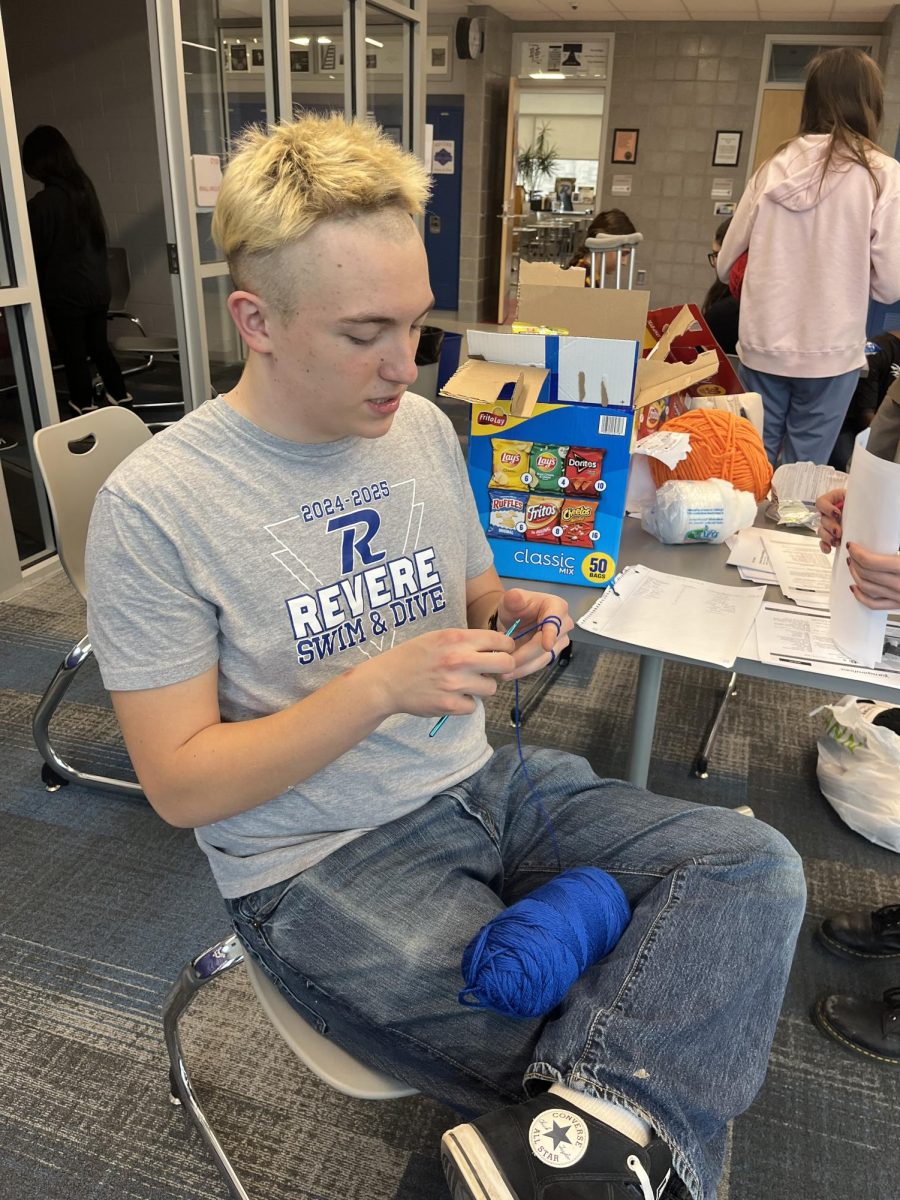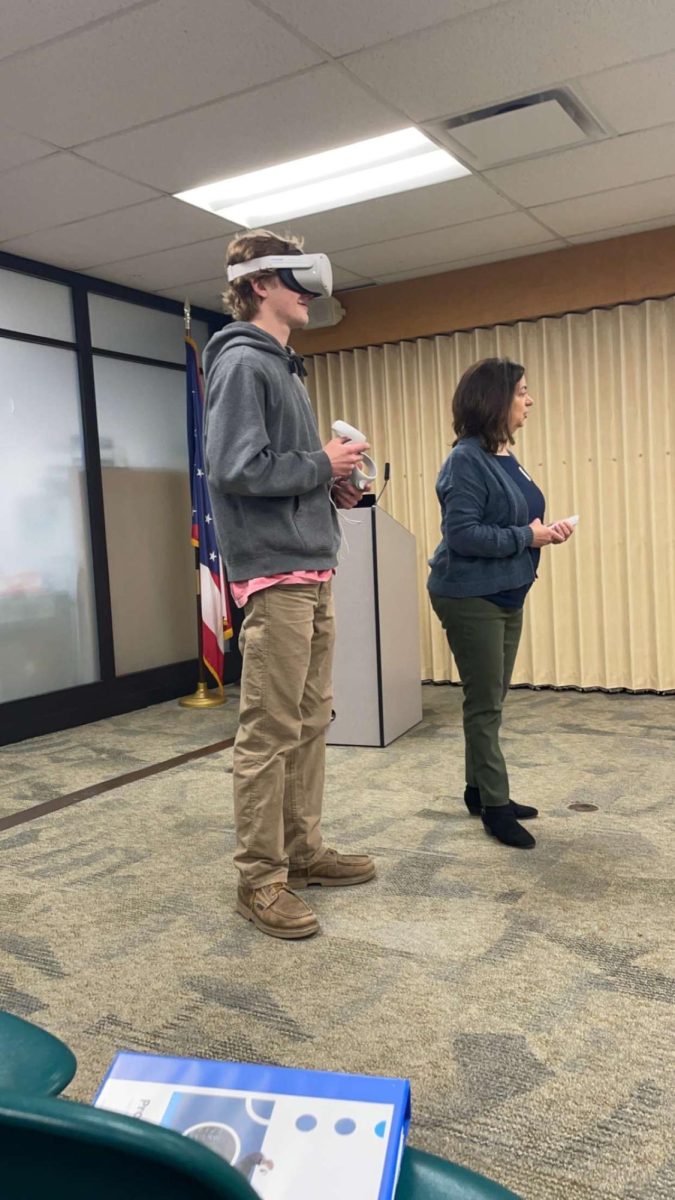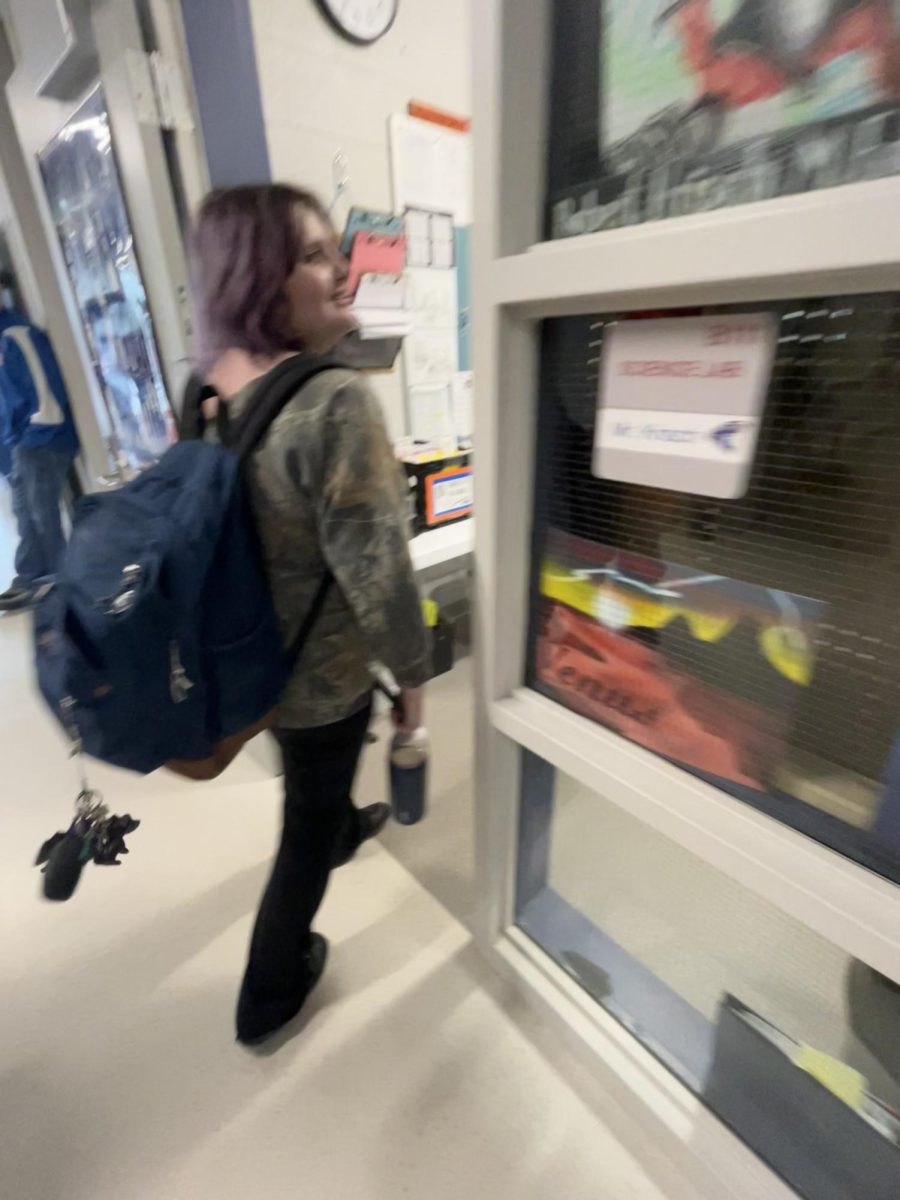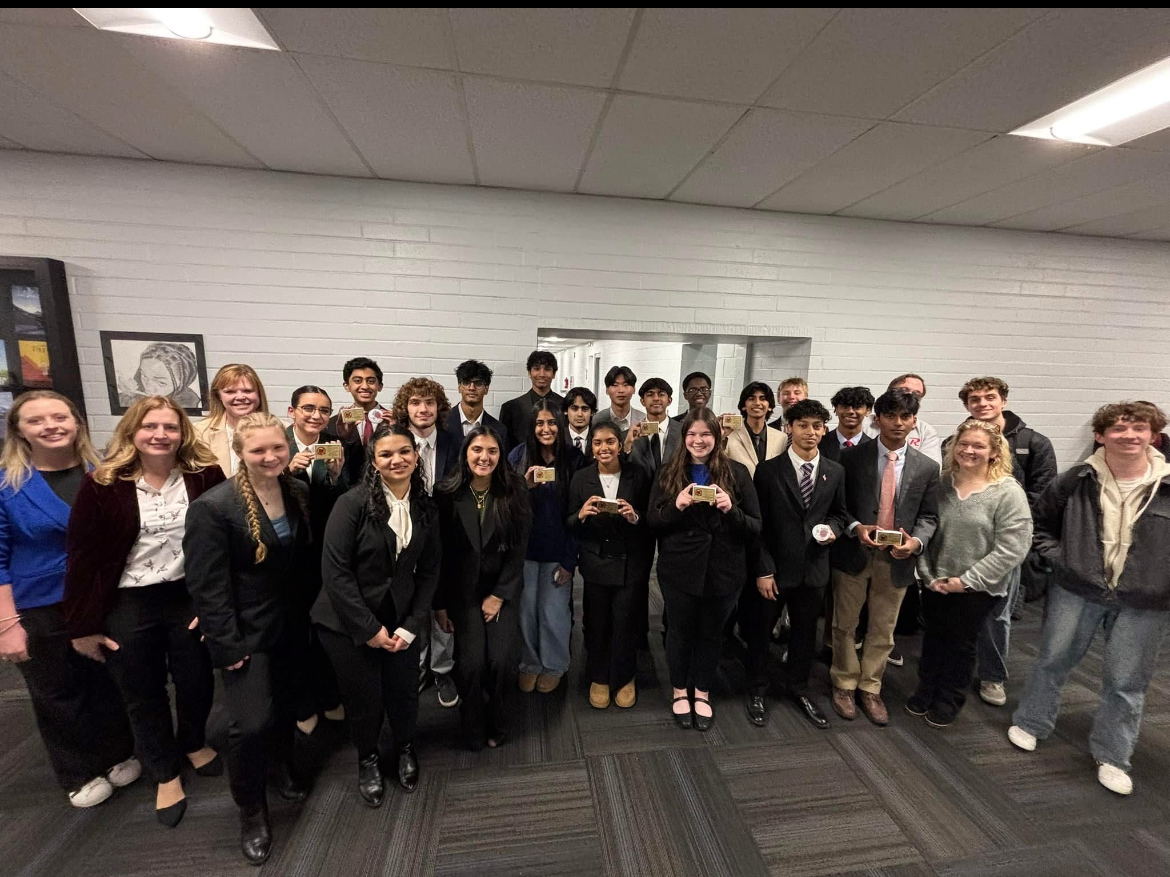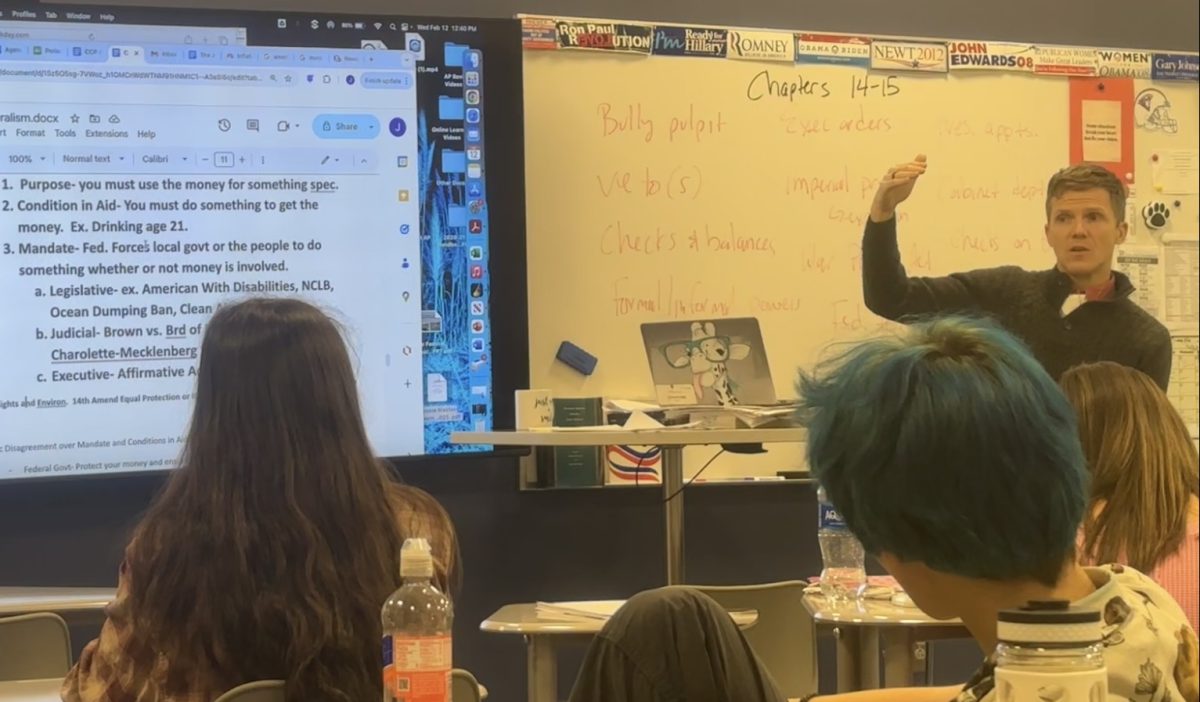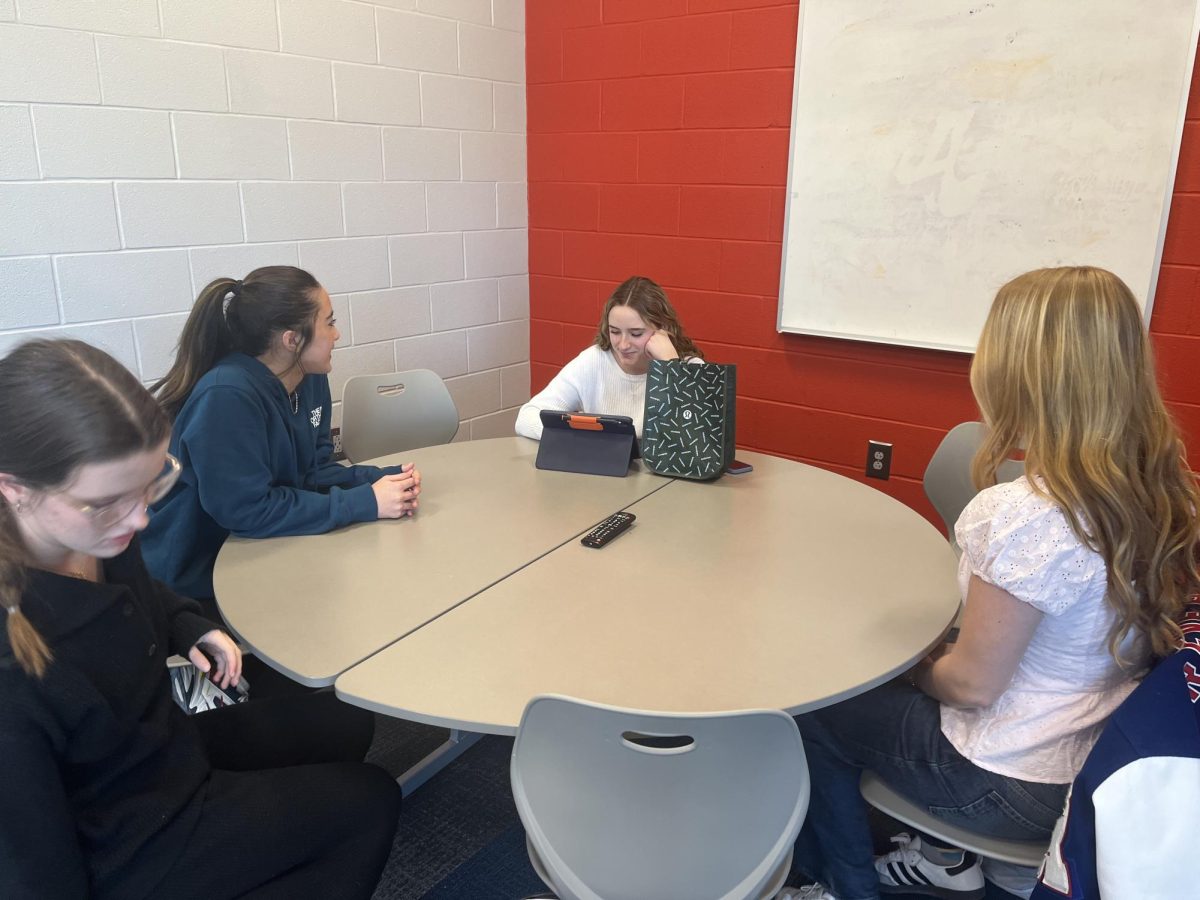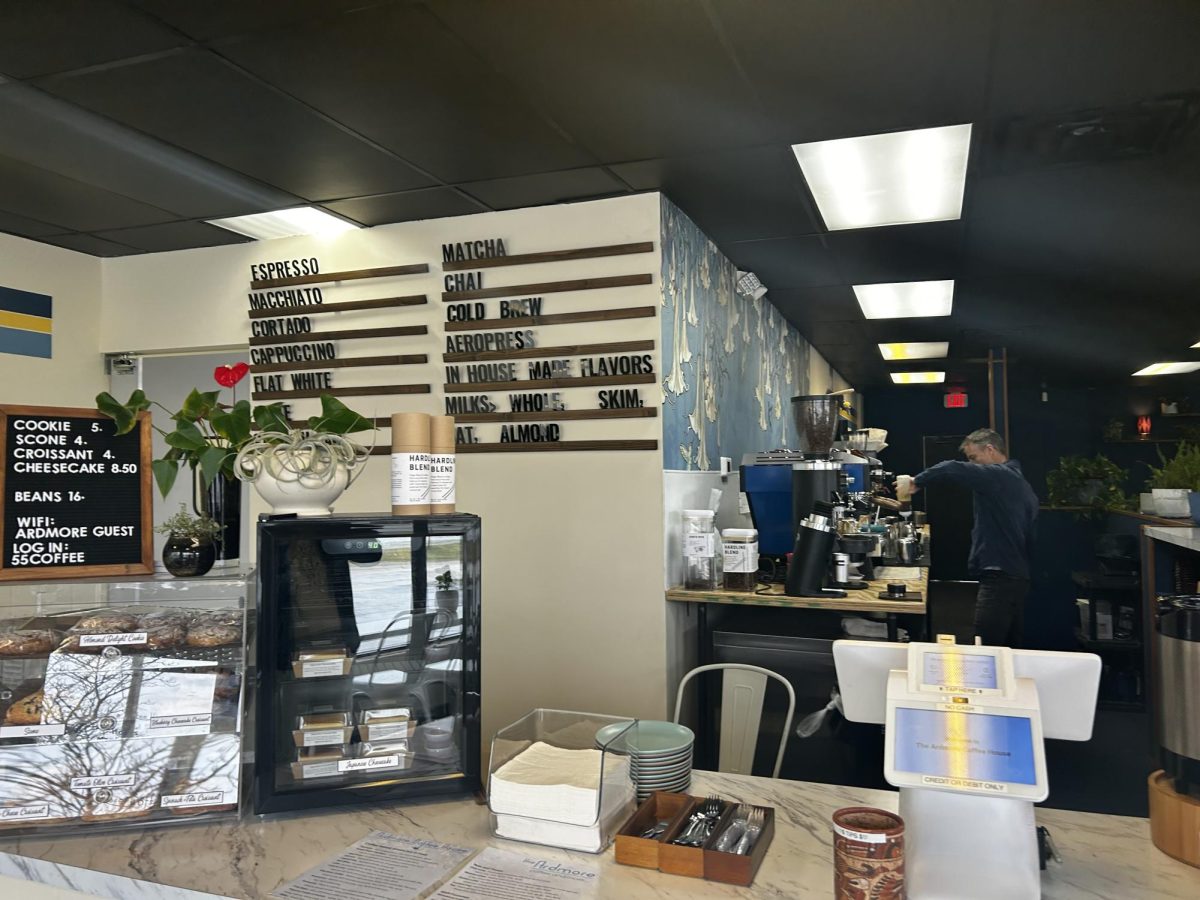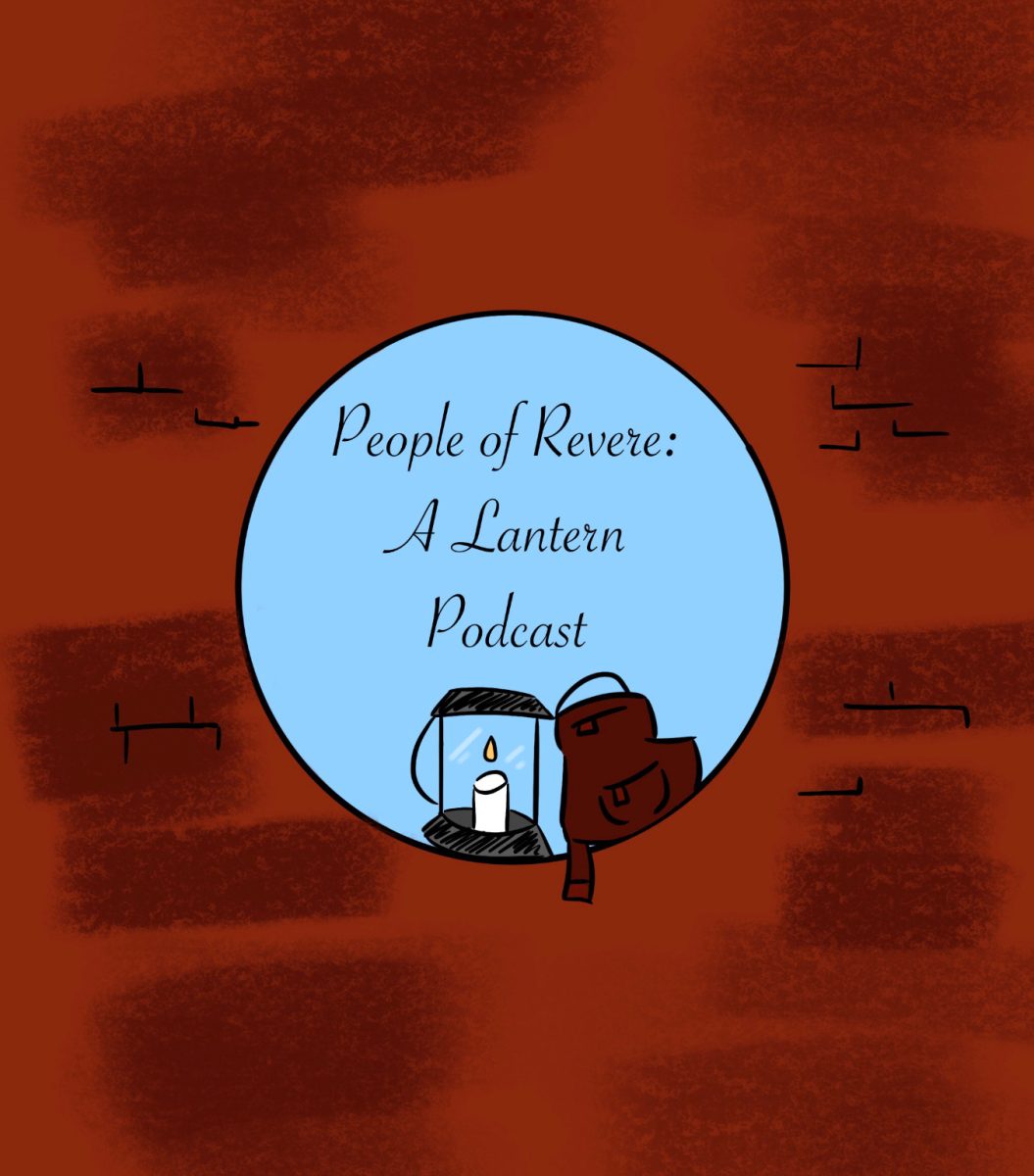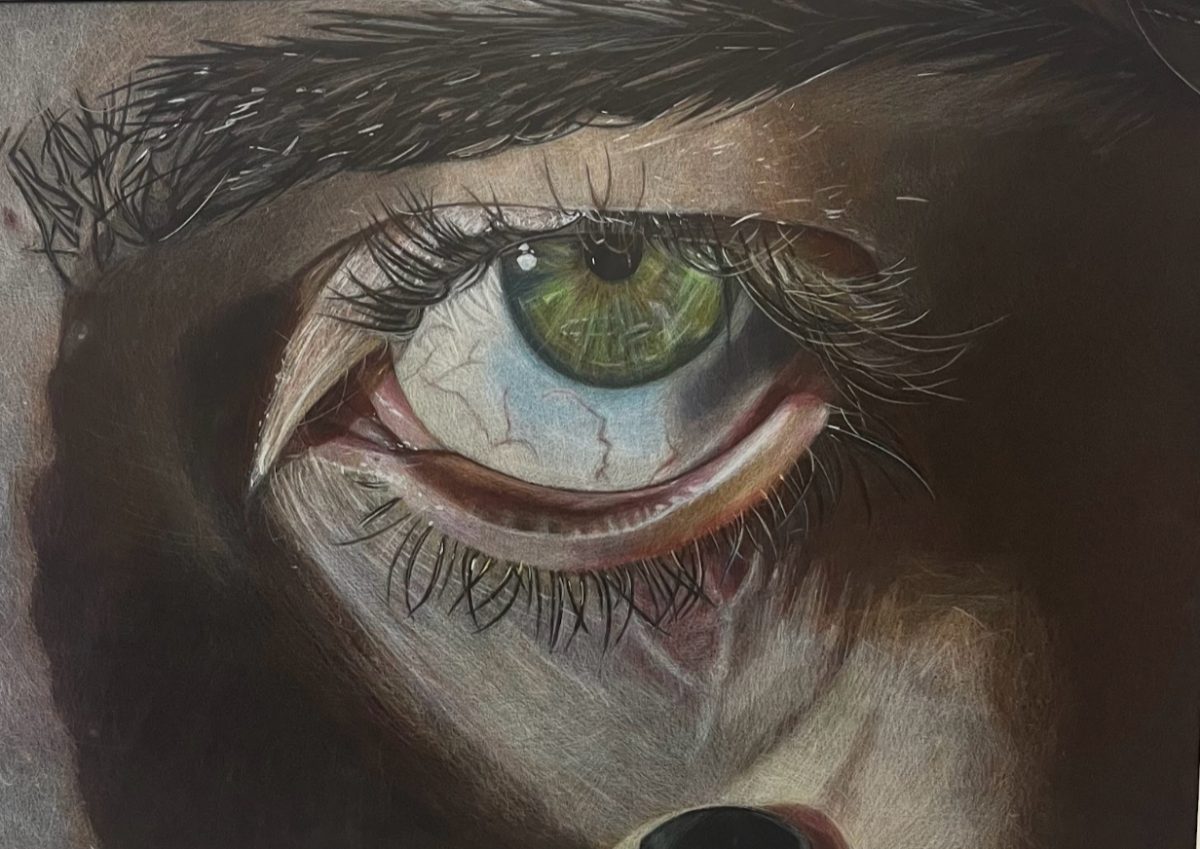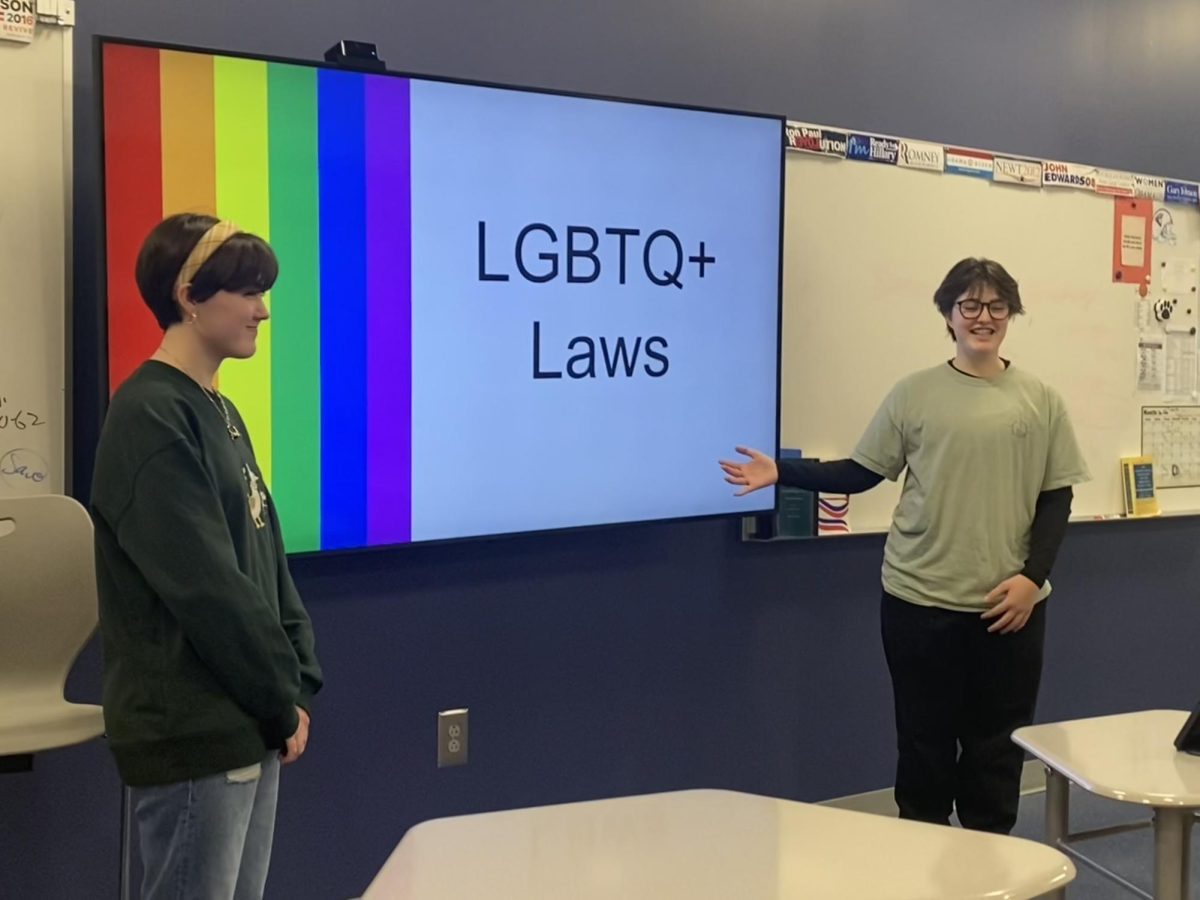Revere High School (RHS) students created a stitching club to give students an opportunity to learn to knit or crochet while donating the items they make.
On February 5, the first Stitch Club meeting took place in the RHS social studies common area. The club’s first meeting consisted of snacks, knitting and crocheting. The meeting was open to not only experienced students but those willing to learn how to knit and/or crochet as well.
Stitch Club president Angelina Camardo first got the idea for Stitch Club while working backstage for RHS’s fall play. The vision of the club came to her after she saw another student knitting backstage.
“One day, we’re backstage, and Eugene [Steiger] is knitting. And the next day, I was like, ’Okay, that’s a great idea.’ So I bring my stuff to crochet and I’m like, ‘You know, if there were a crochet club . . . I would totally join it’,” Camardo said.
Another crochet enthusiast backstage, sophomore Xpyna Princesa, heard Camardo’s idea and approached her later on with more of a full-fledged plan. Princesa would go on to be a Stitch Club officer with freshmen Akua Osei-Boaten and Cassidee Tousley, with Camardo as president of the club.
After the four had the idea and found officers to run the club, they then needed an adviser. Camardo remembered her time in Bath Elementary School’s (BES) crocheting club, Project Linus, and decided to contact the adviser of that now dissolved club.
“Back in fourth and fifth grade, we had a library teacher, Mrs. Burket, and she ran this club during lunch about once a week called Project Linus. . . . I reached out to her and she was thrilled,” Camardo said.
Jill Burket is now a language arts teacher at Revere Middle School teacher but is still an avid knitter and crocheter. Burket explained that her club at BES was through one specific organization, Project Linus. The elementary students would crochet blankets for children in need and donate them.
When creating Stitch Club, Burket and the club’s officers kept Project Linus in mind but had a broader idea for the club.
“Mrs. Burket has some connections to Project Linus from past years so that’s going to be one of our donation places. And then I plan to reach out to maybe local hospitals, charities, women shelters . . . to see if they want anything specific or if they just take any type of donations. And then for each project, we’ll give each student X amount of hours, depending on what they make,” Camardo said.
Burket also noted the differences in the students who are participating in Stitch Club versus those who were in Project Linus.
“Teaching high school kids how to crochet is, I’m anticipating, a lot easier than teaching fourth graders. [Their] fine motor skills are probably much, much better. . . . The motivation may be a little higher, because you know, you guys need volunteer hours. Maybe you see the value in a little more now than you did when you’re young,” she said.
Camardo explained that the club was originally going to meet every other Wednesday, but based on the outcome of their first meeting she has switched it to every Wednesday.
“We got more people than I thought we were going to show up. . . . It was originally going to be every other week, but a lot of people seemed interested and they were asking, ‘Oh, is it going to be next week?’ And the other officers wanted to make it weekly, too. So I was just like, ‘Why not?’ There’s enough interest,” Camardo said.
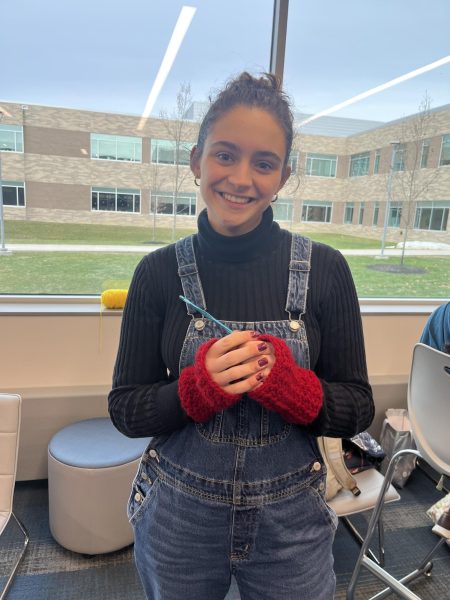
Camardo also explained that only about half of the students at Stitch Club’s first meeting already knew how to crochet or knit.
“A lot of them came because their friends know how to crochet or knit, and they wanted to join to learn. So it was kind of like a package duo,” she said.
With so many beginners to the trade, the club needed to provide supplies. For the first meeting, the supplies came from a combination of Burket’s old inventory from Project Linus and also supplies that the officers did not need or want anymore. Camardo explained how they plan to get supplies in the future.
”[We] plan to do some fundraisers. So sell what we make— we haven’t figured that out either— then that could go towards our supply fund,” she said.
Burket explained why she believes that Stitch club is good for RHS students.
“I think it’s a good way for people to have an outlet. It’s a great stress reliever, sometimes. I know high school gets intense, and it’s a good way to just kind of relieve stress without being on your screen or doing anything else. So hopefully people will get a new interest, a new hobby,” she said.
Tousley stated why she enjoys crocheting. Burket and all of the officers encourage RHS students to join Stitch Club so they too can enjoy the art of knitting and crocheting.
”I feel like it’s just like calming in a way, and instead of buying stuff, you just make it yourself,” she said.
The club currently meets every Wednesday in the social studies common room area. If students would like to learn to knit and/or crochet or donate and receive service hours for their projects, all students are welcome at the meetings.

